There can be your advertisement
300x150
Setting up a Wardrobe: Tips from a Stylist
Not knowing what to wear and nowhere to hang it — few people haven't encountered this issue. Stella Balakhnitina explains how to solve it wisely and organize clothing storage. These tips are universal — they apply to both a full-sized wardrobe and a small closet.
Stella Balakhnitina is a fashion stylist, founder of the style and wardrobe organization project Wardrobe Optimizer, and blogger.
Where to start?
Think about what you like in how your current storage is organized? Which principles and tricks you use that you'd like to keep in the new system? And what is inconvenient, and what you'd rather do without?
Now — sorting through the wardrobe. Divide clothes into two seasons, then within each season distribute them by categories (skirts, dresses, sweaters, etc.) and count the number of items in each. These results will help you better understand the structure of your wardrobe and plan internal organization that is truly convenient for you.
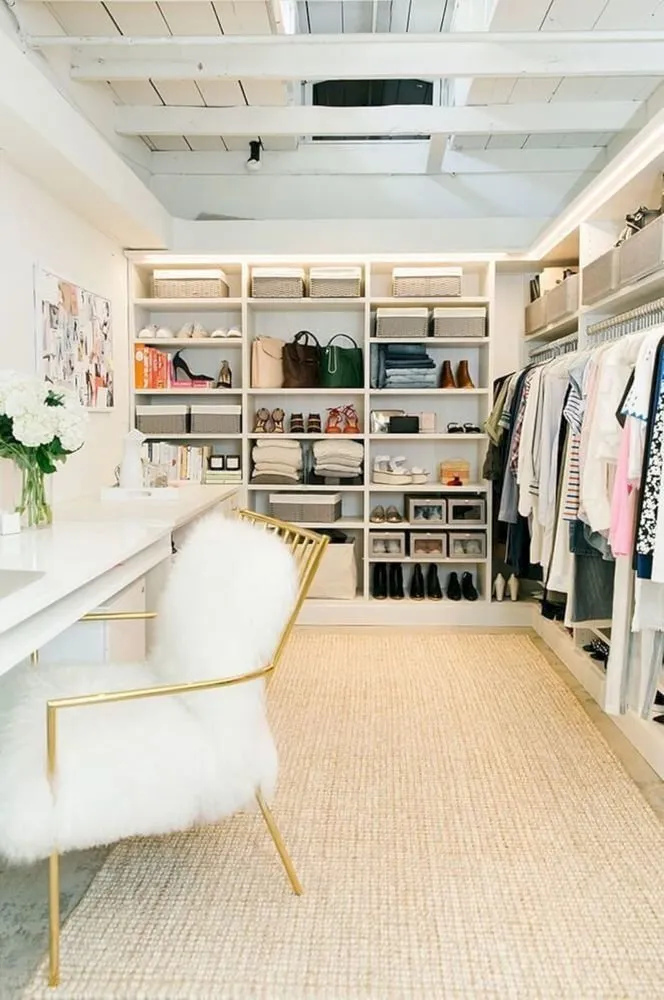
What's next?
Once the preparatory work is done, you can move on to the main part — setting up your future closet or wardrobe. This can be done easily by yourself using this scheme.
Shelves with Hangers
Start with shelves with hangers, where clothes will hang on hangers. To determine how many hangers you need, consider the distance between hangers: 4 cm is optimal, and 2 cm is minimal. Don’t forget to leave space for the hangers themselves.
Accordingly, on a 100 cm hanger you can fit 25–40 hangers.
Sliding Drawers
The next step is sliding drawers or their alternative — sliding baskets. They are more expensive than shelves, but they are a good investment in ergonomic design of the closet: drawers are very convenient for storing undergarments, socks, and loungewear. Dividers can help keep things organized. Place drawers no higher than 100–120 cm from the floor — otherwise, they will be hard to use.
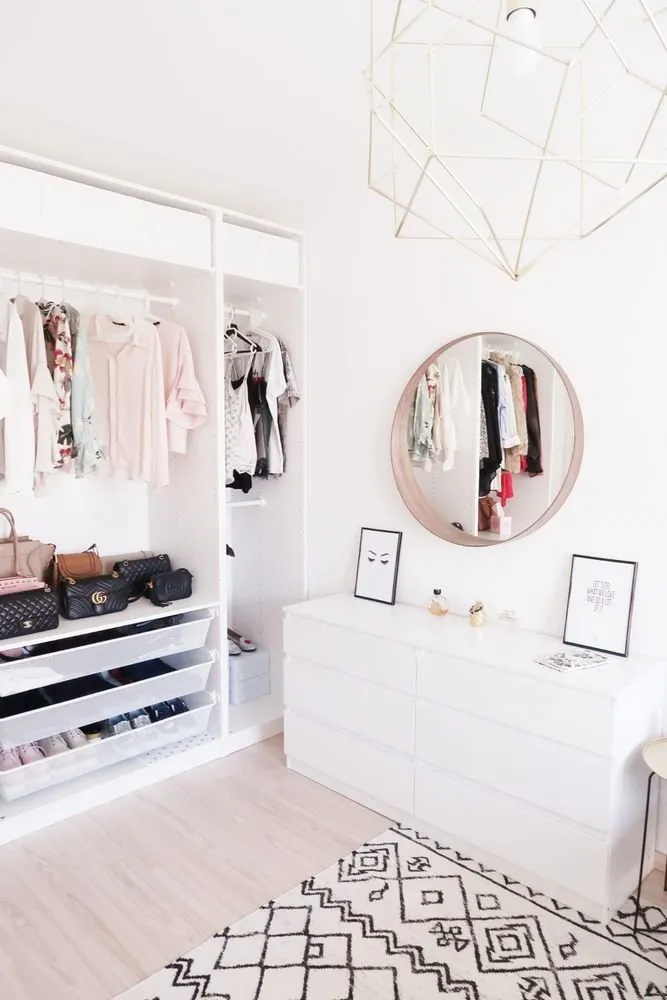
Shelves
Now move on to stationary shelves. They are suitable for bags, off-season clothes, and footwear. The optimal distance between shelves is no less than 40 cm.
Hanger Rods
If there is still room in the closet, you can install sliding hanger rods. Place hanger rods for women’s wardrobes no lower than 50–60 cm, and for men’s — 60–70 cm.
Storing Accessories
Finally, at the last stage, choose small internal elements of the closet — sliding shelves for jewelry, sliding brackets for belts and long necklaces.

What prevents a wardrobe from becoming perfect?
Too Many Deep Shelves
Clothes stored on them are stacked in large piles in two rows. The downside of this storage method is that it’s very inconvenient to get items located at the bottom of the pile — as a result, the pile “falls apart.”
Also, items in the second row are not visible and thus get forgotten and not worn. The solution is to replace some of the shelves with sliding drawers or hanger rods, if possible.
Not Enough Sliding Drawers
Undergarments, socks, and sleepwear are best stored in sliding drawers. Therefore, plan for either sliding drawers in the closet or a dresser.

No Clear Separation Between “Men’s” and “Women’s” Zones
As a result, men’s shelves alternate with women’s in the closet — causing confusion and clutter.
Also, there is no well-planned space for bags
Some people forget about this entirely, while others set aside just a small shelf — and there’s not enough space for bags. To prevent this, count all your bags first, measure the tallest ones by height, and plan space for them. This can include not only shelves but also hooks — sometimes they are more convenient.

More articles:
 10 Amazing Places in Paris You Didn't Know About
10 Amazing Places in Paris You Didn't Know About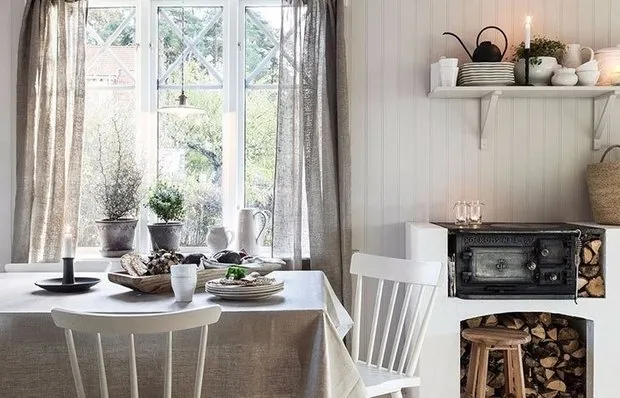 What to Learn from Western Designers: 8 Tips for the Dacha
What to Learn from Western Designers: 8 Tips for the Dacha What to Do About Very Low Ceilings in My Apartment?
What to Do About Very Low Ceilings in My Apartment? Bright Apartment in London's Hackney
Bright Apartment in London's Hackney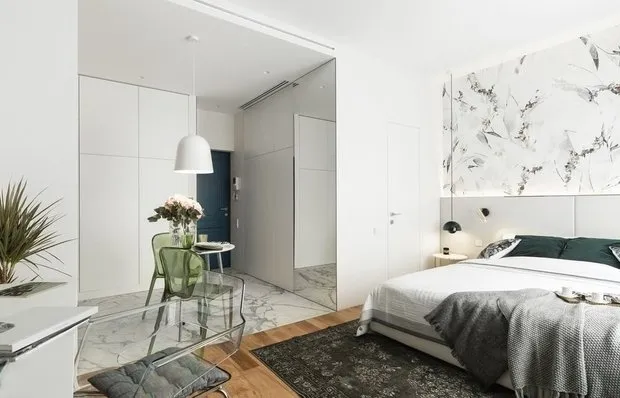 Guide: 8 Small Apartments with Smart Storage Solutions
Guide: 8 Small Apartments with Smart Storage Solutions Color + Patterns in Interior Design, or Say Goodbye to Beige
Color + Patterns in Interior Design, or Say Goodbye to Beige Kitchen-Living Room Design: 7 Favorite Tips from Marina Braginskaya
Kitchen-Living Room Design: 7 Favorite Tips from Marina Braginskaya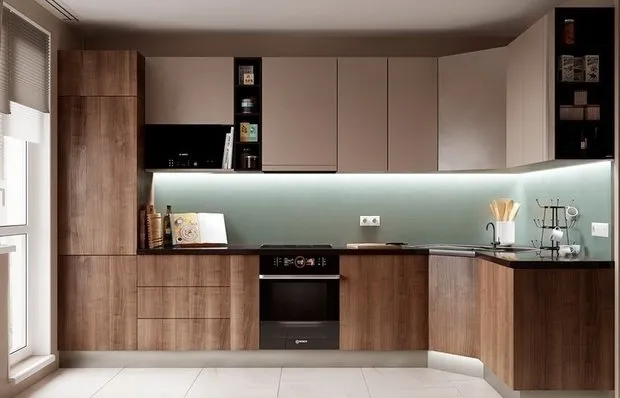 Personal Experience: How to Use Wood in Interior Design
Personal Experience: How to Use Wood in Interior Design